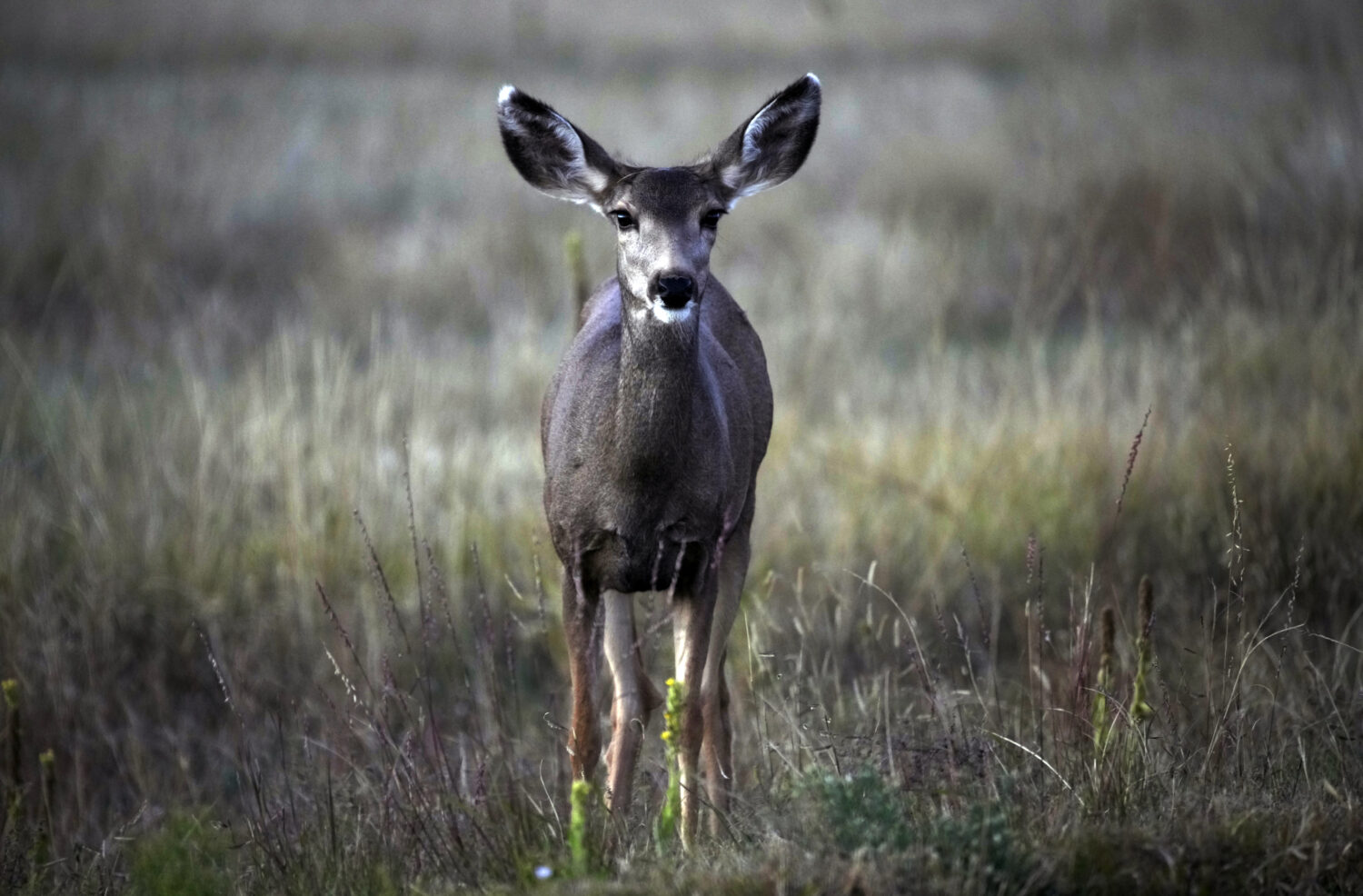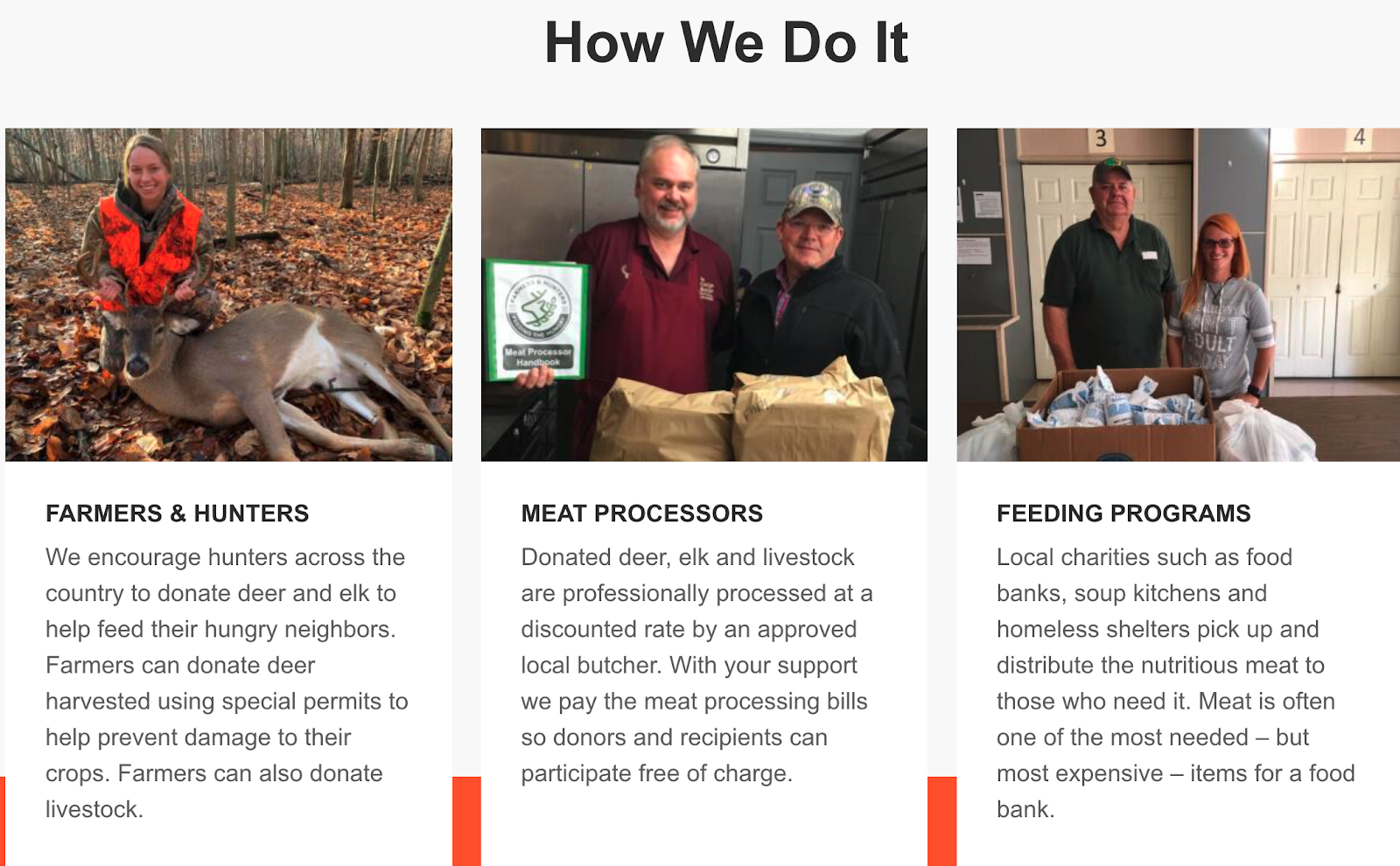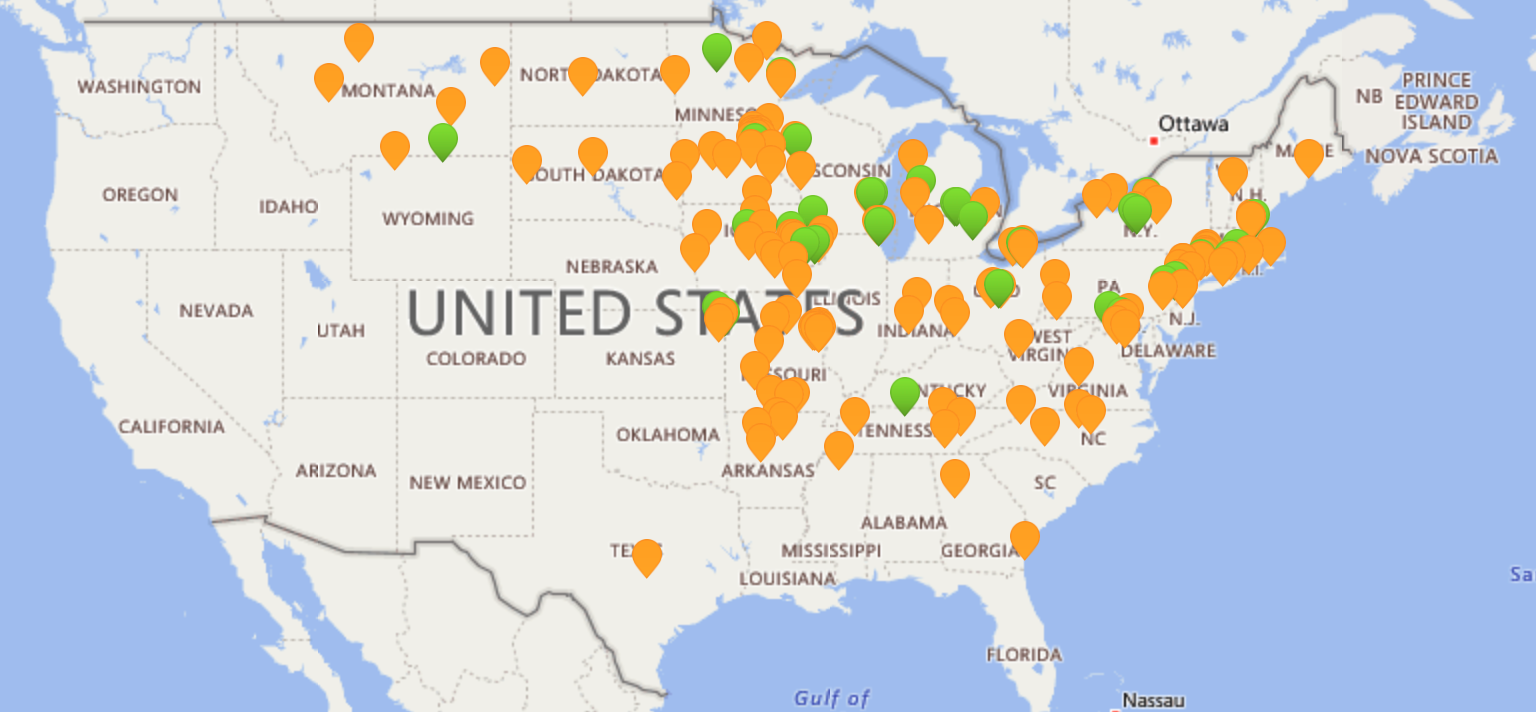
The Morning Meeting with Al Tompkins is a daily Poynter briefing of story ideas worth considering and more timely context for journalists, written by senior faculty Al Tompkins. Sign up here to have it delivered to your inbox every weekday morning.
The Spectrum Orlando shooting
Today I will continue to update our coverage of the awful story of an Orlando TV reporter who was shot to death and a photojournalist who was critically injured while they covered a homicide near Orlando Wednesday afternoon.
After the gunman shot the TV crew, he ran to a nearby house and shot a woman and her 9-year-old daughter. The girl died.
The man now facing murder charges has a long arrest record despite being 19 years old. In just five years, he has been arrested a dozen times. Go here for our coverage.
A threat to forests bigger than climate change: deer?
I didn’t see this one coming. Washington Post columnist Dana Milbank tees off on what experts say may be a bigger threat to some forests than climate change or urbanization. It is, are you ready for this … deer.
Milbank writes that Bambi has turned into something of an ecological bully, eating the house and home of birds and other critters:
The Nature Conservancy several years ago argued that deer might be “a bigger threat to Eastern forests than climate change.” And things have only worsened. Doug Tallamy, an entomologist and wildlife ecologist at the University of Delaware, tells me that white-tailed deer in the East are now “about 14 times over the carrying capacity,” meaning the ability of the ecosystem to sustain the species.
Experts estimate that for healthy forests, because a deer eats about 3% to 5% of its body weight in greens every day, we need to get the deer population down to about 10 per square mile. Deer are eating the things that once were nests for birds and hiding places for others. A million motorists hit deer every year and deer spread ticks that carry Lyme disease. The indictment continues:
Perhaps most ominously, the deer overpopulation prevents the growth of new trees, especially oaks, because they eat seedlings and saplings before the trees can mature. When old trees die, there are none to replace them. That means fewer acorns — the staple that allows bears, turkeys, woodpeckers, squirrels, chipmunks, mice and many other species to survive the winter. “The acorns coming out of those oaks make the world go around,” says Bill McShea, a wildlife ecologist at Smithsonian Conservation Biology Institute and “there ain’t no oaks coming up.”
The problem is clear, but the solution is not. As we have discussed in this column before, despite all of the guns in America, the number of hunters is on a steady decline. Animal rights groups say we should “take steps to reduce their fertility.”
One Michigan town appointed a “citizen deer committee” that began managing deer populations after “citizen concerns about damage to landscaping and property, deer-vehicle collisions and degraded forest ecosystems.”
In the same town, Freemont, “Over the years, police sharpshooters have harvested hundreds of deer within defined areas, deer-related damage reports have declined significantly, and Fremont is now in maintenance mode, having achieved its deer management objectives.”
Brookfield, Wisconsin, tried similar tactics, including warning people to plant things deer won’t eat. Cayuga Heights, New York, formed a deer management program that “reduced its deer population by 75% from its all-time high of 125 deer/square mile.”
Cornell’s website says, “The City of Sheridan, Wyoming (approximate population 17,800) was experiencing a rapidly growing deer population resulting in conflicts in many areas. The large volume of deer was causing property damage and numerous motor vehicles annually. In addition, deer were perceived by some community members as aggressive to both pets and humans. Complaints about the overpopulation became abundant and the City of Sheridan decided to take actions to control the population. The City elected to enlist the citizens to assist with population control through an archery only program.”
All of this could lead you to turn to this Cornell researcher, who puts things in pretty stark terms. He says, essentially, something has to give:
Oak seedlings protected in cages grew well, but deer annually browsed ≥60% of unprotected seedlings. Despite female sterilization rates of >90%, the deer population remained stable. Neither sterilization nor recreational hunting reduced deer browse rates and neither appears able to achieve reductions in deer populations or their impacts. We eliminated deer sterilization and recreational hunting in a core management area in favor of allowing volunteer archers to shoot deer over bait, including at night. This resulted in a substantial reduction in the deer population and a linear decline in browse rates as a function of spring deer abundance.
Public trust stewardship of North American landscapes will require a fundamental overhaul in deer management to provide for a brighter future, and oak seedlings may be a promising metric to assess success. These changes will require intense public debate and may require new approaches such as regulated commercial hunting, natural dispersal, or intentional release of important deer predators (e.g., wolves and mountain lions). Such drastic changes in deer management will be highly controversial, and at present, likely difficult to implement in North America. However, the future of our forest ecosystems and their associated biodiversity will depend on evidence to guide change in landscape management and stewardship.
One way to cover this story is to turn to the Hunters and Farmers for the Hungry.
Their website is loaded with examples of hunters who take their prey to processors who cut it up and feed people who need the meat. I see such testimonials from Indiana, North Carolina, Maryland, Ohio and Georgia,
This website is loaded with research from The Nature Conservancy, Cornell University and other sources. Deer are among the most studied of all wildlife so scientists know a lot about their populations and behaviors, and there are decades of data.
The Nature Conservancy and Cornell provide an interactive map with examples of programs that cities around America that have tried to control deer populations. Lots of these projects have been going on for a couple of decades so there should be some good data to show if they work … or not.
Why aren’t teens driving?
I took my driving test on the day I turned 16. I got my first speeding ticket the day after I got my license.
The Washington Post explores why teens today are in no hurry to get their licenses. The numbers show it.
- 60 percent of American 18-year-olds had a driver’s license in 2021, down from 80 percent in 1983, according to data from the Federal Highway Administration.
- In that same period, the number of 16-year-olds with licenses dropped from 46 percent to 25 percent.
There may be many things at work here. Uber and Lyft make it easy to get where you are going. And the Post said maybe young people meet their “community” online now. The story also quotes a therapist who says young people today have a lot of anxieties about the responsibilities of driving.
Even a decade ago, a University of Michigan study found the percentage of teens getting their licenses to drive was dropping. By 2016, people of all ages were driving less. In 2017, a PBS story noted teens were less likely to get summer jobs than previous cohorts, meaning they had less need to drive.
Grouchy Twitter experts think they know why:
(image/Twitter)
I wonder if there is any element of this connected to young people seeing people who look like them being confronted by police.
Pay-per-Chew: restaurants trying subscriptions
The average American now juggles more than six subscriptions in their lives. Here might be one more. Restaurants — and not just high-end eateries — are trying subscription models that discount delivery, drinks and other stuff to try to stabilize their income and keep people coming back. This is a company that helps restaurants build such plans from Minneapolis to San Francisco, Seattle to Austin.
The Associated Press says some chains are already finding some success:
St. Louis-based Panera had nearly 40 million members in its loyalty program in early 2020, but it wanted to convince them to drop in more often. So, it launched a subscription program that offered unlimited coffee and tea for $8.99 per month. Customers started coming in several times a week, and about one-third of the time they bought food.
Last year, Panera expanded the subscription. Now, members can pay $11.99 per month or $119.99 per year for unlimited hot and cold drinks. Annual subscribers also get free delivery.
Eduardo Luz, Panera’s chief brand and concept officer, won’t share exact numbers but he said members now make up 25% of the chain’s transactions.
“It’s a huge traffic driver,” Luz said.
All of that is cool, but about three out of four Americans say we have too many subscriptions now. The study by Bango found:
- A third of US subscribers (34%) pay for a subscription that they never use
- 45% find it too hard to keep track of where and how they signed up to subscriptions
- 35% of US subscribers don’t know how much they’re spending on subscriptions
- Nearly half of US subscribers (42%) feel ‘locked in’ to their current subscription providers.
- 51% wish they could easily opt out of automatic renewals.
- Almost half (46%) are frustrated that they can’t take ‘payment holidays’, temporarily pausing subscriptions, while 56% want to be able to toggle subscriptions on and off as they like.
Rolling Stones and the remaining Beatles come together for an album?
Maybe you boomers can explain to everyone else why it is a big deal that the Rolling Stones may be cutting an album with Paul McCartney and Ringo Starr. Variety says:
Variety hears from multiple sources that Paul McCartney has recorded bass parts for a forthcoming Rolling Stones project being helmed by 2021 Grammy producer of the year Andrew Watt. Ringo Starr is also slated to play on the yet-to-be-announced album.
Recording sessions took place in Los Angeles in recent weeks and, while it’s unclear which tracks will make the final cut — or whether McCartney and Starr would end up on the same song — the album’s production is nearing the mixing phase. Frontman Mick Jagger said in 2021 that the group has “a lot of tracks done,” and guitarist Keith Richards said in a New Year’s Instagram post last month that “There’s some new music on its way.”
The Stones’ first big hit was the John Lennon-Paul McCartney song “I wanna be your man.” Lennon and McCartney also sang backup on a Stones song you probably never heard of.









